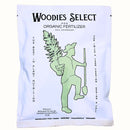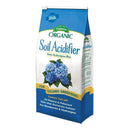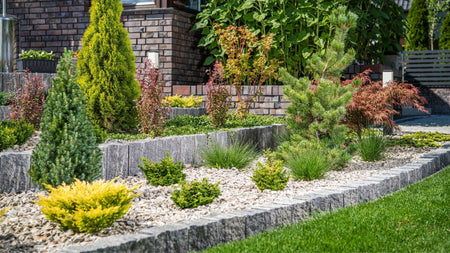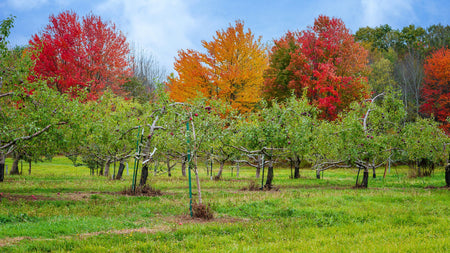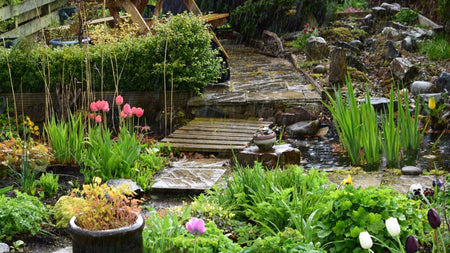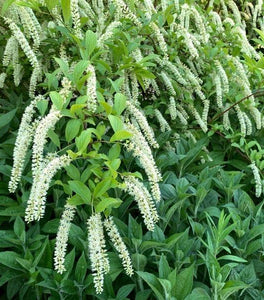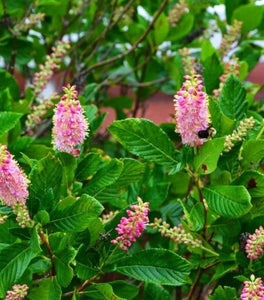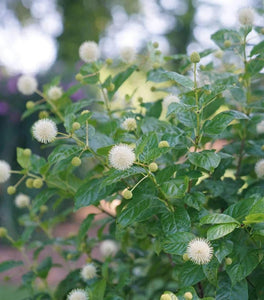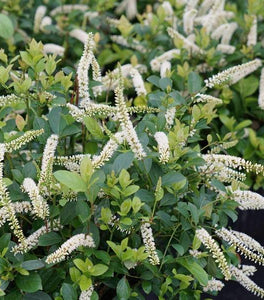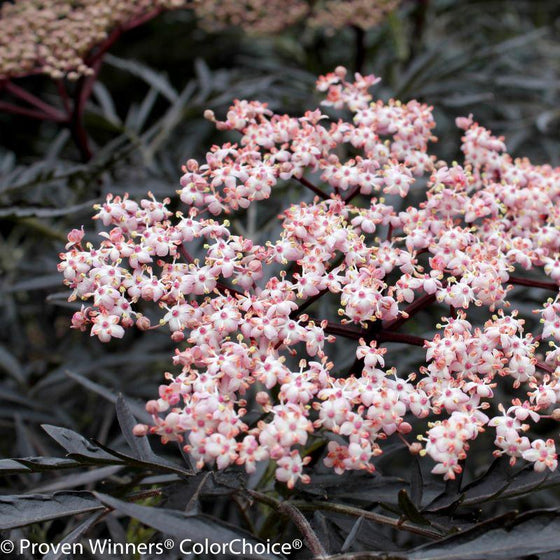
Images Depict Mature Plants
Black Lace Elderberry Shrubs
Black Lace® Elderberry (Sambucus nigra ‘Eva’ PP#15575) is a striking ornamental shrub prized for its dramatic, deeply cut, dark purple-black foliage that resembles the texture of Japanese maple leaves. This bold, deciduous shrub produces large clusters of soft pink flowers in early summer, which contrast beautifully against the dark foliage and attract pollinators like bees and butterflies. Following the blooms, clusters of dark purple berries may form, which can be harvested for making elderberry syrup, wine, or jam when cooked, or left on the plant to feed birds and wildlife.
Growing 6 to 8 feet tall and wide, Black Lace® Elderberry thrives in full sun to partial shade and prefers moist, well-drained soil. It makes a dramatic statement as a specimen plant, in mixed borders, or even as a bold deciduous hedge. For best foliage color and flowering, plant it in full sun and prune annually in late winter or early spring to maintain its shape and encourage vigorous new growth. It’s also tolerant of clay soils and resistant to deer, making it a practical and eye-catching choice for a variety of landscape settings.
In addition to its ornamental appeal, Black Lace® Elderberry is an excellent addition to pollinator and edible landscapes, blending beauty and function. Its combination of fine-textured foliage, attractive flowers, and potential fruit makes it a standout plant for gardeners seeking something both showy and useful. Whether you're designing a modern garden, a wildlife-friendly border, or an edible landscape with visual flair, Black Lace® Elderberry adds year-round interest and unique color contrast to your planting palette.

| Growth Zone: | 4-7 |
|---|---|
| Mature Height: | 6 to 8 feet |
| Mature Width: | 6 to 8 feet |
| Classification: | Broad Leaved deciduous shrub |
| Sunlight: | Full Sun to part sun |
| Habit: | Mounding |
| Flower Color: | Pink flowers spring to early summer |
| Foliage: | Purple Black Foliage |
| Pruning Season: | Prune after flowering |
| Soil Condition: | Any moist well drained soil |
| Water Require: | Water well until established |
| Uses: | Extremely attractive when used as a focal point in the mixed border, mass planting, or a specimen planting. Provides nectar sources for pollinators. |
How to Care for Black Lace® Elderberry
Be sure to read our planting instructions to ensure healthy and happy Black Lace Elderberry Shrubs for years to come!
How Do I Plant A Black Lace Elderberry Shrub?
To plant a Black Lace® Elderberry shrub, choose a location that receives full sun to partial shade and has moist, well-drained soil. While it tolerates a range of soil types—including clay—this shrub performs best in nutrient-rich soil with consistent moisture. Start by digging a hole twice as wide and as deep as the root ball. Remove the plant from its container, gently loosen the roots, and place it in the hole with the crown level to the surrounding ground. Backfill with the native soil or a soil-compost mix, firm it gently, and water thoroughly to eliminate air pockets and help the plant establish. Space multiple Black Lace Elderberry shrubs 6 to 8 feet apart to accommodate their mature size and ensure good air circulation. After planting, apply a 2- to 3-inch layer of mulch around the base to retain moisture, suppress weeds, and regulate soil temperature—keeping the mulch a few inches away from the crown to prevent rot. This stunning shrub can be used as a specimen, hedge, or focal point in pollinator gardens and edible landscapes. With proper planting and care, your Black Lace Elderberry will thrive, offering dramatic foliage, soft pink blooms, and ornamental or harvestable berries for years to come.
How Do I water A Black Lace Elderberry Shrub?
Watering your Black Lace® Elderberry shrub properly is key to establishing healthy growth and supporting its lush foliage and flower production. During the first growing season, keep the soil consistently moist by watering deeply once or twice per week, depending on weather conditions. Focus on soaking the root zone to encourage deep root development, especially in dry periods. Use a soaker hose or slow-drip irrigation system to maintain even moisture levels without waterlogging the soil, which helps prevent root rot and promotes overall plant health. Once established, Black Lace Elderberry is moderately drought tolerant but still prefers regular watering during extended dry spells, especially when forming blooms or fruit. Mulching around the base with organic material like shredded bark or compost helps retain soil moisture and reduces watering frequency. Be sure to monitor soil moisture regularly, particularly during hot summer months or if the plant is grown in full sun. With a consistent watering schedule tailored to its needs, your Black Lace Elderberry will reward you with vibrant purple-black foliage, soft pink flowers, and clusters of ornamental, wildlife-friendly berries.
How Do I Fertilize My Black Lace Elderberry Shrub?
To fertilize your Black Lace® Elderberry shrub, apply a balanced, slow-release fertilizer in early spring as new growth begins. A fertilizer with a 10-10-10 or similar ratio will promote strong root development, healthy foliage, and abundant blooms. Spread the fertilizer evenly around the base of the shrub, staying a few inches away from the stems, and water it in thoroughly to help nutrients reach the root zone. For a more organic approach, top-dress the soil with compost or aged manure, which can provide essential nutrients while improving soil structure and drainage. For best results, avoid over-fertilizing, as too much nitrogen can lead to excessive leaf growth at the expense of flower and berry production. In poorer soils, a second light application of fertilizer in midsummer can support continued growth and flowering. Whether you’re growing your Black Lace Elderberry as a striking specimen or as part of an edible or pollinator-friendly garden, regular but moderate fertilization ensures a healthy, vigorous shrub with rich purple-black foliage, fragrant pink blooms, and clusters of decorative, bird-attracting berries.

How and When Should I Prune My Black Lace Elderberry Shrub?
Prune your Black Lace® Elderberry shrub in late winter or early spring, before new growth begins, to maintain its shape and encourage vigorous blooming and berry production. Start by removing any dead, damaged, or crossing branches, then thin out older stems to stimulate fresh growth from the base. Because elderberries flower on new wood, annual pruning not only improves airflow and plant structure but also promotes a more prolific display of soft pink blooms and dark purple foliage. For a more compact appearance or hedge-like form, light shaping cuts can also be made throughout the growing season. If your Black Lace Elderberry becomes overgrown or leggy, it can tolerate hard pruning down to about 12 inches from the ground to rejuvenate growth and restore a bushier habit. This dramatic cutback is best done every few years in early spring for maximum renewal. Regular pruning enhances the plant's ornamental appeal and prevents it from becoming too woody or unruly in the landscape. With proper timing and technique, pruning keeps your elderberry healthy, vibrant, and full of richly colored foliage, making it a standout in mixed borders, pollinator gardens, or edible landscape designs.









